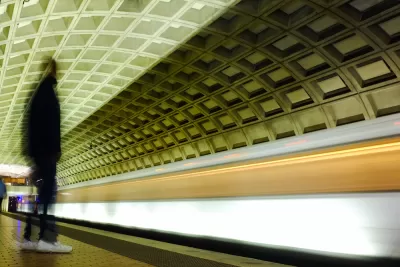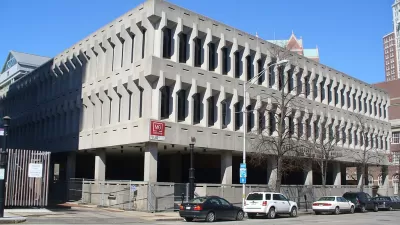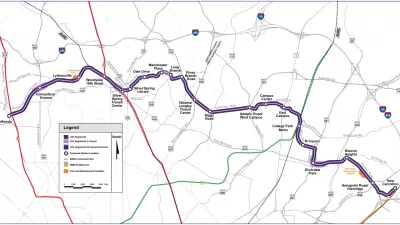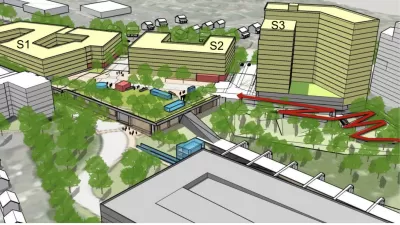Controversy erupted last week in Washington, D.C., after D.C. Metro decided to paint Union Station's vaulted ceilings—a famous icon of the District, it's regional transit system, and the architectural style of Brutalism.

Martin Austermuhle and Amanda Kolson Hurley both took to the pages of their respective media outlets to document the outcry against a controversial decision by the Washington Metropolitan Area Transit Authority (WMATA) to paint a coat of white paint over the station's famous grey vault.
Austermuhle reports that the WMATA's Back2Good campaign is responsible for the paint job—one project among plans to power-wash, scrub, and polish all of the system's 91 stations on an annual basis.
The decision to paint Union Station, however, prompted strong responses from writers like Kriston Capps and Kolson Hurley.
After initially voicing concern on Twitter, Kolson Hurley eventually wrote an article for Washington City Paper, describing the decision to pain Union Station as troubling for "multiple reasons":
"First…dirt will show up prominently on a background of white paint," writes Kolson Hurley. "Second, exposed concrete is integral to the Brutalist style in which the Metro system was designed."
An update to the latter article notes that the Washington chapter of the American Institute of Architects had since expressed "deep concern" over the painting of the Union Station vault.
FULL STORY: Metro’s Effort To Create A Brighter Station Is Met With ‘Brutal’ Opposition

Planetizen Federal Action Tracker
A weekly monitor of how Trump’s orders and actions are impacting planners and planning in America.

Map: Where Senate Republicans Want to Sell Your Public Lands
For public land advocates, the Senate Republicans’ proposal to sell millions of acres of public land in the West is “the biggest fight of their careers.”

Restaurant Patios Were a Pandemic Win — Why Were They so Hard to Keep?
Social distancing requirements and changes in travel patterns prompted cities to pilot new uses for street and sidewalk space. Then it got complicated.

Platform Pilsner: Vancouver Transit Agency Releases... a Beer?
TransLink will receive a portion of every sale of the four-pack.

Toronto Weighs Cheaper Transit, Parking Hikes for Major Events
Special event rates would take effect during large festivals, sports games and concerts to ‘discourage driving, manage congestion and free up space for transit.”

Berlin to Consider Car-Free Zone Larger Than Manhattan
The area bound by the 22-mile Ringbahn would still allow 12 uses of a private automobile per year per person, and several other exemptions.
Urban Design for Planners 1: Software Tools
This six-course series explores essential urban design concepts using open source software and equips planners with the tools they need to participate fully in the urban design process.
Planning for Universal Design
Learn the tools for implementing Universal Design in planning regulations.
Heyer Gruel & Associates PA
JM Goldson LLC
Custer County Colorado
City of Camden Redevelopment Agency
City of Astoria
Transportation Research & Education Center (TREC) at Portland State University
Camden Redevelopment Agency
City of Claremont
Municipality of Princeton (NJ)





























